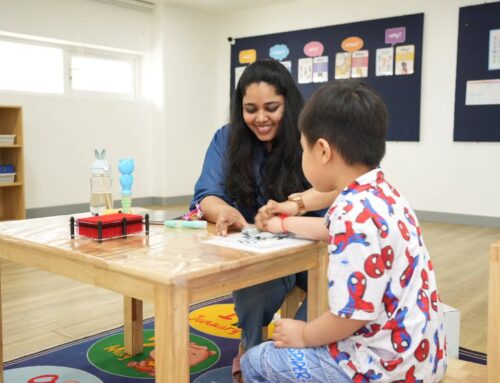Pattern recognition is more than a cute classroom game—it’s a foundation for logical thinking, early math, reading readiness, and executive function. At OrbRom Center in Phnom Penh, we use playful “What comes next?” tasks to help children notice repetition, sequence information, and make predictions. These skills support attention, problem-solving, and flexible thinking—vital for success at school and at home.
How Pattern Recognition Builds the Brain
When a child studies a repeating sequence (for example, color–shape–color–shape) and selects the next item, they’re practising three big skills:
-
Sequencing and memory: Holding the order in mind and applying it.
-
Cognitive flexibility: Shifting from one attribute to another (color, size, animal, direction).
-
Early numeracy and logic: Spotting units of repetition prepares children for skip counting, multiplication, and decoding text patterns.
Parents who enjoy nature themes often love how animal sequences make learning feel like play. If your child’s interests lean toward animals or conservation stories, themed patterns can keep motivation high while still targeting essential learning goals.
Try These Quick Wins at Home
Short, predictable activities work best. Aim for 5–10 minutes:
-
AB, AAB, and ABB lines: Start with two-step patterns (AB), then increase complexity.
-
Mix attributes: Alternate by color, then by size or direction to grow flexibility.
-
Verbalise the rule: Encourage your child to say the pattern out loud—“orange, purple, orange, purple”—to reinforce working memory.
-
Link to counting: After finishing a row, ask “How many units make this pattern?” to bridge into math.
For more ideas, explore our posts on building number sense with blocks, teaching counting skills, and why early intervention matters. If you’re unsure where to start, our guide to developmental assessments and this primer on sorting and counting can help you plan next steps.
How OrbRom Center Supports Your Child
Our therapists weave pattern recognition into individualized sessions to build attention, regulation, and school readiness. Depending on your child’s needs, we may integrate:
-
Occupational Therapy: Visual-motor integration, sustained attention, and cognitive flexibility using graded pattern tasks. Learn more: Occupational Therapy at OrbRom.
-
Preschool Program: Structured play centers with pattern lines, matching games, and story-based sequencing that nurture early literacy and numeracy. Details here: Preschool Program.
-
Assessments: If you’d like a clear snapshot of strengths and needs, our team offers comprehensive Assessments to guide targeted goals and home carryover.
The Takeaway
Pattern recognition is a small activity with big impact. Done regularly, it strengthens memory, attention, and reasoning—skills that transfer to reading, math, and everyday problem-solving. If your family is looking for practical, research-informed support, OrbRom Center is ready to help your child build strong learning foundations through engaging, animal-themed and play-based pattern activities.
Pattern recognition is simple to start, easy to adapt, and powerful for growth—one predictable step at a time.






